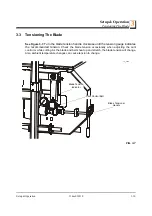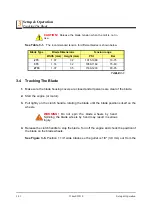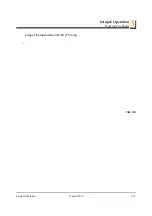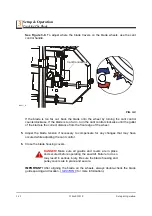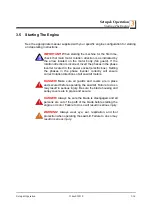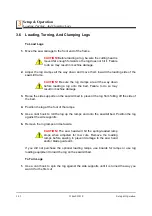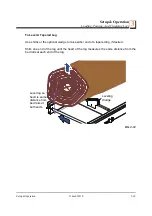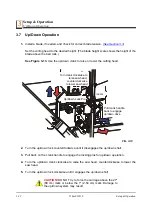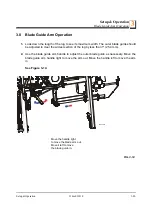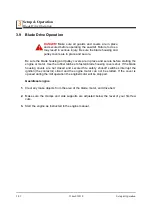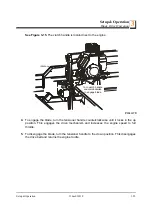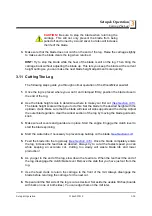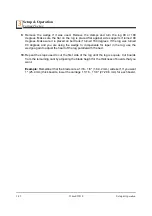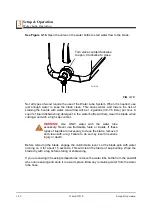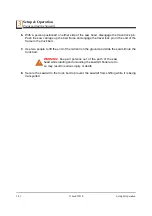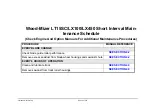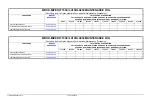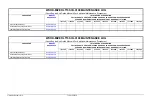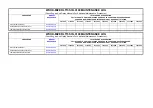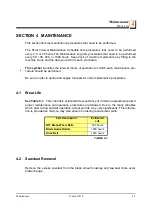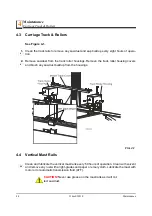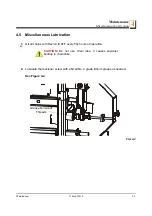
Setup & Operation
Cutting The Log
Setup & Operation
15doc091818
3-24
3
CAUTION!
Be sure to stop the blade when returning the
carriage. This will not only prevent the blade from being
pulled off and ruined by a wood sliver, but also will increase
the life of the blade.
3.
Make sure that the blade does not catch on the end of the log. Raise the carriage slightly
to make sure the blade clears the log when returned.
HINT:
Try to stop the blade while the heel of the blade is still on the log. Then bring the
carriage back without adjusting the blade up. This lets you keep the blade at the current
height setting so you can make the next blade height adjustment more quickly.
3.11 Cutting The Log
The following steps guide you through normal operation of the Wood-Mizer sawmill.
1.
Once the log is placed where you want it and clamped firmly, position the blade close to
the end of the log.
2.
Use the blade height scale to determine where to make your first cut
).
The blade height scale will help you to do this. Set the blade to the desired height with the
up/down crank. Make sure that the blade will clear all side supports and the clamp. Adjust
the outer blade guide to clear the widest section of the log by moving the blade guide arm
knob.
3.
Make sure all covers and guards are in place. Start the engine. Engage the clutch lever to
start the blade spinning.
4.
Start the water lube if necessary to prevent sap buildup on the blade.
.
5.
Feed the blade into the log slowly
(
Once the blade completely enters
the log, increase the feed rate as desired. Always try to cut at the fastest speed you can
while keeping an accurate cut. Cutting too slowly will waste blade life and lower
production!
6.
As you get to the end of the log, slow down the feed rate. When the teeth exit the end of
the log, disengage the clutch/brake lever. Remove the slab that you have just cut from the
log.
7.
Use the feed crank to return the carriage to the front of the mill. Always disengage the
blade before returning the carriage for the next cut.
8.
Repeat until the first side of the log is cut as desired. Set aside the usable flitches (boards
with bark on one or both sides). You can edge them on the mill later.

